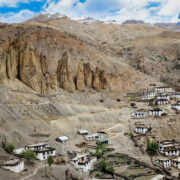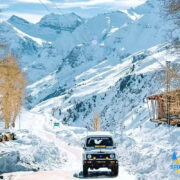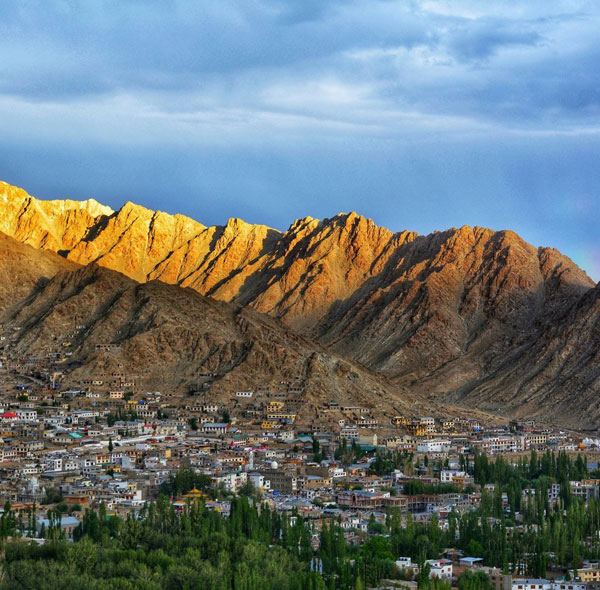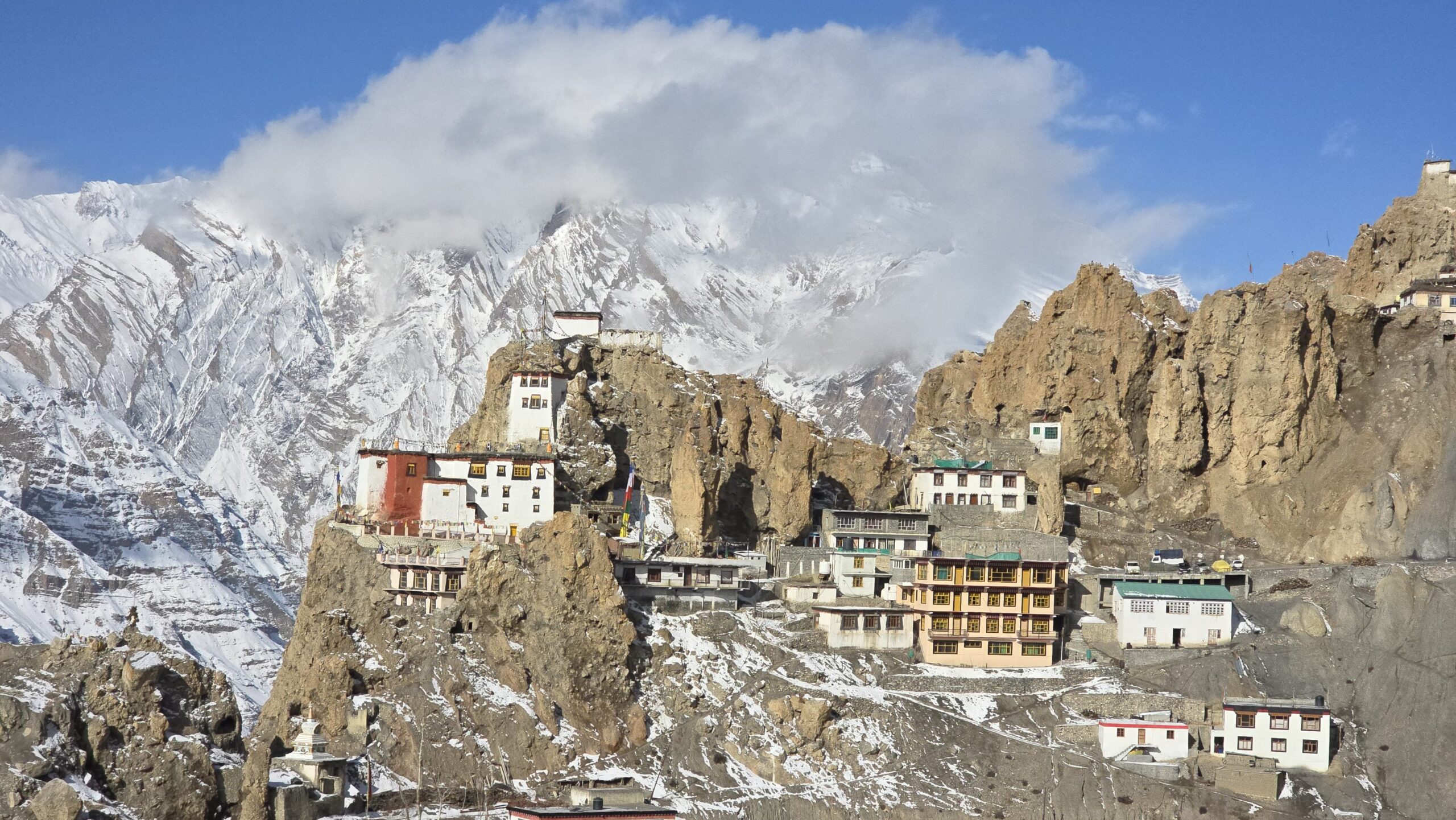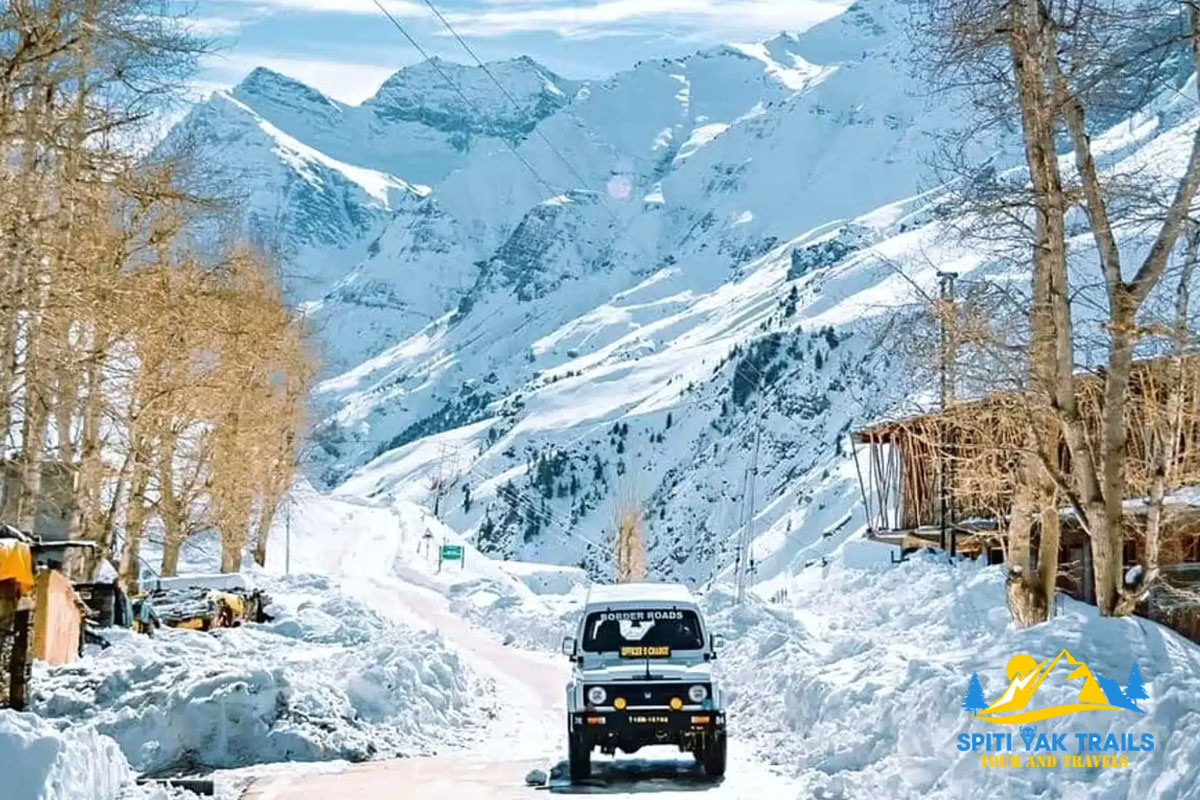
Winter Spiti 4×4 Expeditions
A Comprehensive Guide to Snowy Escapes and Unique Wildlife
Many of you would like to make an interesting trip on the vacation while Spiti is the best option in the winter. Spiti Valley is one of the cold deserted mountain valleys located at the height of the Himalayas in the north-eastern part of Himachal Pradesh. A winter expedition to Spiti Valley is an endless thrill.
Winter in Spiti Valley is a surreal experience, with its stark landscapes blanketed in snow, frozen rivers, and temperatures dropping as low as – 30°C. As Spiti is called the middle-land between India and Tibet. Spiti Valley is a barren desert land with rugged terrain; the summertime is an absolute favourite to visit the valley of adventures. But, the same valley turns into a white beauty; the desert land gets covered under thick sheets of snow, making Spiti Valley in winter an absolute delight.
Monasteries such as the Dhankar Monastery, Key Monastery, and Tabo Monastery, among other high-altitude monasteries, become even more enchanting during winter. Winter transforms this remote haven into a serene yet challenging masterpiece, offering a rare glimpse into the resilient spirit of its inhabitants.
Highlights of Spiti Valley Expedition
- The place is vitally not crowded in winters and one can initially find Soul of a Place.
- During the expedition, one experienced and understand the living culture in the winters of the Cold dessert.
- The place is vitally not crowded in winters and one can initially find Soul of a Place.
- Frozen rivers & waterfalls (e.g., in Pin Valley)
- Snow-covered monasteries (Key, Tabo, Dhankar)
- Wildlife spotting – rare chance to see the Snow Leopard
- Local homestays – experience authentic Spitian hospitality
The Best Time to Visit Spiti Valley
The Best Time to Visit Spiti Valley is in the winter when everything is covered in snow. The Spiti Valley in December is one of the most visited during the winter, allowing you to see the frozen waterfalls. Spiti Valley in Winter also allows you to witness the beauty of the frozen rivers.
How To Reach Spiti Valley In Winter
By Air :
The closest airport to Spiti Valley is the Bhuntar Airport, about 250 kilometres away. However, the airports remain closed in the winter, and the only way you can reach the valley is by road.
By Train:
The nearest railway stations to Spiti valley are:
Chandigarh Railway Station (450 km from Spiti)
Kalka Railway Station (420 km from Spiti)
Joginder Nagar Station or Shimla Station (360 km from Spiti
By Road:
There are usually two routes to reach the valley. One is from Shimla, while the other is from Manali. The Shimla route is closed during winter. Therefore, the Manali route is the only way to reach the Spiti Valley in winter.
Why Travel To Spiti Valley In Winter?
Travelling to Spiti Valley in Winter is one of the best experiences you can have in this lifetime. There are many advantages to why you should travel to Spiti Valley in Winter. The unparalleled beauty is one of the significant reasons you should travel to Spiti Valley in winter. In winter,the number of tourists decreases significantly, and one can enjoy the serene beauty of the Spiti in December without the crowd. Spiti Valley in winter offers different charm and beauty, with a wide range of winter sports activities for adventure enthusiasts. Some of the most popular activities that one can participate in during the winter include Skiing, Snowboarding, Ice Sketing
Top Experiences
1. Pin Parvati Pass Trek :
The Pin Parvati Pass trek is a challenging high-altitude trek in Himachal Pradesh, India, known for its diverse landscapes and remote beauty. It connects the Parvati Valley (Kullu side) with the Pin Valley (Spiti side), offering a dramatic contrast between lush green valleys and arid desert landscapes. Pin Parvati Pass trek in Himachal is not just a trek but an expedition from Kullu Valley to barren and rocky Spiti Valley. The trekking begins from Manali which is one of the main tourist destinations for trekking and other adventurous activities. One of the most exciting things that a person discovers on this trek is crossing the Pin Parvati Pass which lies at the height of 5319 meters or 17451 feet above sea level.
Highlights:
- Connects lush Kullu with arid Spiti
- Glaciers, alpine lakes, and Pin Valley National Park
- Adventure-packed high-altitude crossing
2. Pin–Bhabha Pass Trek :
The Pin bhaba pass trek is a high-altitude trek in Himachal Pradesh that connects two very different valleys. One is Bhaba Valley in Kinnaur, which is lush and green, and the other is Pin Valley in Spiti, which is dry, cold, and starkly beautiful. The Pin Bhaba Pass Trek is like a real-life story of two valleys. You start from the Bhaba Valley in Kinnaur, which is all bright green and full of life. Then, you climb over the Bhaba Pass and enter the Pin Valley in Lahaul and Spiti, which is part of a cold desert area. This area is also a special protected place with a national park and a wildlife sanctuary nearby. When trekking, you will walk through everything—forests, grasslands, rivers, rocky slopes, and snow patches. This trek is not just about the stunning differences in landscape. It also introduces you to two distinct Himalayan cultures – the livelihoods, structure of houses, lifestyles – as you traverse from one side of the mountain to the other. Pin Bhaba Pass is hands down the most dramatic pass crossing trek in our country.
Highlights:
- Lesser-known but stunning
- Transitions from pine forests to barren Spiti landscapes
- Campsites by rivers and meadows
3. Chandratal to Baralacha La Trek (Summer only) :
The Chandratal Baralacha La (‘la’ means pass) is a popular pass crossing that lies at the intersection of the Great Himalayan range and the Zanskar range of mountains, within the ambit of the Himalayas, in Lahaul, Himachal. Chandratal Baralacha Trek is a lake that is situated along the eastward route to Spiti (from Manali), along one of the most treacherous roads in the world. The scenic trek from Chandra Tal to Bara lacha la Pass is lesser-known and relatively easy. The pass is situated in between along the Leh-Manali highway and you can always
catch a vehicle from here back to Manali. A bonus will be the wildlife sightings that include Marmots, Pica, Horned larks, Lammergeier (Bearded vulture), Wagtails, Black redstart bird, Sand lark, Snow pigeons and Choughs. The Chandratal to Baralachala Trek in Spiti includes everything thrilling about a trek in Ladakh without the effort, time and cost involved in getting there.
Highlights:
- High-altitude lakes
- Stunning views of the Lahaul-Spiti landscape
- Wild camping near Chandratal
4. Parang La Trek :
Parang La Trek is a popular high-altitude trek located in the northernIndian state of Himachal Pradesh, near the border with the Ladakh region of Jammu and Kashmir. It is a challenging and adventurous trek that offers stunning landscapes, rugged terrains, and a chance to experience the unique culture of the region. Parang La Trek offers breathtaking panoramic views of the surrounding peaks and valleys. Along the way, trekkers have the opportunity to interact with the local people, predominantly of Tibetan origin, and experience their unique
culture, traditions, and lifestyle. The region is known for its wildlife, and you might spot animals like the elusive snow leopard, Himalayan blue sheep, marmots, and various species of birds.
Highlights:
- Crosses Spiti into Ladakh
- Glacier crossings, high-altitude desert, and wild rivers
- One of the most isolated treks in India
5. Dhankar – Lhalung – Tabo Monastery Trek:
Dhankar, the former erstwhile capital of Spiti Valley, was home to royal family 300 years ago. Dhankar is also a heaven for trekking enthusiasts who often visit this village to trek to Lhalung village or the Dhankar Lake. Dotted with little hamlets, Dhankar village sits on the top of a hill surrounded by nothing but barren mountains. The village literally lives on an edge overlooking the confluence of Spiti and Pin rivers. Dhankar
village is located between the towns Tabo and Kaza. It is stationed at an altitude of 12,780 feet above sea level. Lhalung Village, one of the offbeat gems in Spiti Valley feels like a secret waiting to be discovered.
Surrounded by the utmost beauty, this peaceful village offers a rare glimpse into the untouched soul of Himachal. Lhalung Monastery also known as “Golden Temple”, is supposedly the oldest monastery in the Spiti region, in fact one of the oldest in the entire religion. Tabo Monastery is one of the oldest functioning Buddhist enclaves in India, known for its incredible wall frescoes, mud stupas, and ancient scriptures.
Highlights:
- Spiritual & cultural trail
- Visit three ancient monasteries
- Ideal for beginners
6. Spotting A Snow Leopard :
The cold desert of Spiti valley is a sight to behold. Snow Leopard in Spiti valley is a solo traveler and known as the “ghost of the mountains”. Snow Leopard Expedition is a wildlife sighting and photography tour that focuses on tracking and spotting snow leopards in Spiti Valley. Spiti valley is the prime habitat of snow leopards. Winter trip to Spiti valley has its own charm and challenges. Snow leopards are extremely shy and silent creatures inhabiting steep slopes. The temperature in Spiti valley can drop to -30°C making it one of the
harshest living conditions. They are easily camouflaged and have the potential for long jumps. Snow leopards in Spiti valley usually prey on blue sheep, Ibex, Himalayan tahr, marmot, pika, hares and small rodents. Winter season has challenging weather conditions but it increases the chances of spotting Snow leopards in the valley. Snow Leopards are the apex predators that help maintain the ecological balance in Spiti valley.
Road Conditions :
The roads leading to Spiti Valley may be covered in snow, and some passes might be closed during the winter months. It’s advisable to check the road conditions before planning your trip and be prepared for possible delays. While we and our team will make avail everything easy.
Things to Carry with Winter Spiti Expedition
Winter in Spiti is not a joke, it can be very harsh, so being well-prepared is essential for a safe and enjoyable trip. When preparing for Spiti Winter Expedition consider the following:
Warm Clothing : Pack thermal wear, waterproof jackets, and insulated boots. The valley often experiences below-zero temperatures, so layering up is crucial under those circumstances.
Vehicle Preparation : If you’re planning to drive a vehicle, ensure it is equipped with snow chains and is a four-wheel drive, as roads can be icy and treacherous.
Health Precautions : When climbing high altitudes it may cause altitude sickness, so make sure to carry the necessary medications and hydrate well.
Accommodations : During winter there will be limited accommodation options as many guesthouses close due to harsh weather, so make sure to book in advance with those guesthouses that will remain open during that time.
Frequently Asked Questions (FAQS)
Ans. Absolutely, you can visit Spiti Valley in winter. However, it is important to note that the winter season in Spiti Valley is harsh and can be challenging due to heavy snowfall, extreme cold, and limited connectivity. But, with the right preparation, one can cherish the Spiti valley in winter.
Ans. Yes, Spiti Valley is open in December, but the weather conditions can be harsh during the time. December is the beginning of the winter season in the valley, and during the time harsh snowfall takes place which can lead to limited connectivity due to road closures.
Ans. The best month to visit the Spiti Valley basically depends on your preferences, what you want to explore and the activities you want to take part in. However, the most preferable time to visit the valley is considered between the summer months of June to September, this is the time when summer begins and the snow starts to melt, which makes travel around the valley easy.
Ans. The best month to visit the Spiti Valley basically depends on your preferences, what you want to explore and the activities you want to take part in. However, the most preferable time to visit the valley is considered between the summer months of June to September. This is the time when summer begins and the snow starts to melt, which makes travel around the valley easy. Research, Plan your itinerary, Book your accommodation, Pack appropriate winter clothing and gear, Hire a skilled driver, Carry necessary supplies.
Ans. The Spiti Winter Expedition is a thrilling road trip from Manali to Spiti Valley, offering breathtaking views, adventure, and a chance to explore the untouched beauty of Spiti in winter.
- Ans.
Warm clothing (Thermals, fleece, down jacket). - Waterproof gloves, socks, and snow boots.
- Sunglasses and sunscreen (Snow reflects sunlight).
- Power banks and extra batteries (Cold drains batteries fast).
- Dry snacks and instant food items.
- First-aid kit and personal medications.
Conclusion
Spiti Valley is the best and eye-catching site. It is cover with snow fall. It is situated in the heart of the Himalayas, transforms into a mesmerizing winter wonderland from November to March. The snow-covered landscape, frozen rivers, and monasteries blanketed in white create a scene of unparalleled beauty. Proper planning is the key to unlocking the full potential of a winter visit to Spiti. Road conditions can be challenging, and it’s crucial to stay updated on the status of passes and routes, potentially causing delays but adding an element of unpredictability to your journey.


